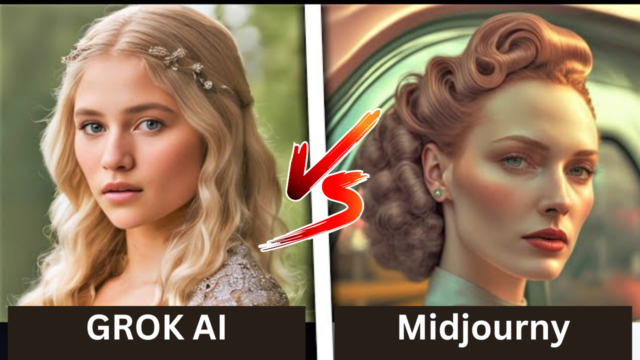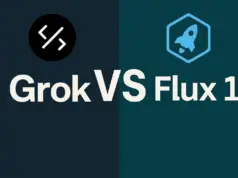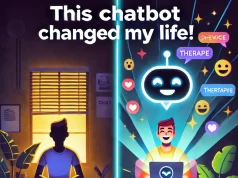Artificial intelligence (AI) is the science and engineering of creating machines and systems that can perform tasks that normally require human intelligence, such as understanding language, recognizing images, and generating content.
One of the most amazing and creative applications of AI is the ability to turn text into images or to create visual representations of natural language prompts.
This is not only a difficult and complex task, but also a valuable and useful one, as it can enable new forms of expression, learning, entertainment, and art.
In this article, we will review two different AI text-to-image generators that can create images based on natural language prompts: Grok and Midjourney.
We will examine their methods, models, outputs, advantages, and disadvantages, and see how they compare and what they have in common.
What is Grok?
Grok is a new AI project by X, a company founded by Elon Musk, the famous entrepreneur and innovator behind Tesla, SpaceX, Neuralink, and The Boring Company.
X is a research and development company that focuses on creating artificial general intelligence (AGI), or the ability to perform any intellectual task that a human can.
Grok is one of the first products of X, and it aims to showcase the power and potential of AGI.
Grok uses a large language model (LLM) called Grok-1, which has 33 billion parameters and is trained on a massive corpus of text and images from the internet.
A language model is a system that can predict the next word or phrase in a given sequence of text, based on the probability of how likely it is to occur.
A large language model is a language model that has a huge number of parameters, or the values that determine how the model behaves and learns.
Grok-1 is one of the largest language models in the world, and it can generate text and images from any prompt, as well as answer questions, perform calculations, and more.
Grok also has real-time access to X, a satellite internet service that provides global coverage and high-speed connectivity.
X allows Grok to access the latest and most relevant information from the web, as well as to communicate with other AI systems and humans.
Grok claims to appreciate sarcasm and have a bit of humor in its responses, and it can also adjust its tone and style according to the user’s preferences.
What is Midjourney?
Midjourney is an AI text-to-image generator that was launched in 2022 by Fabian Stelzer, a Berlin-based artist and programmer.
Stelzer is interested in exploring the intersection of art, technology, and society, and he created Midjourney as a way to express his vision and creativity.
Midjourney is an online platform that allows anyone to create images from text prompts, as well as to share and discover the creations of other users.
Midjourney uses a generative adversarial network (GAN) called StyleGAN2, which has 9 billion parameters and is trained on a curated dataset of high-quality images from various domains.
A generative adversarial network is a system that consists of two competing neural networks, or computational models that mimic the structure and function of the human brain.
One network called the generator, tries to create realistic images from random noise or text prompts, while the other network, called the discriminator, tries to distinguish between real and fake images.
The two networks learn from each other and improve over time until the generator can produce images that are indistinguishable from real ones.
StyleGAN2 is one of the most advanced GANs in the world, and it can generate images that have a distinctive style and mood, often with a darker or more surreal tone.
How do Grok and Midjourney compare?
Both Grok and Midjourney can generate impressive images from a variety of prompts, but they also have some limitations and challenges.
For example, Grok sometimes produces images that are too digital or unrealistic, while Midjourney sometimes struggles with photorealism or coherence.
Both systems also depend on the quality and clarity of the prompts, and they may not always understand the intended meaning or context of the user.
Therefore, it is important to experiment with different prompts and see how each system responds.
You can also compare the results of Grok, Midjourney, and other AI text-to-image generators, such as DALL-E and Stable Diffusion, to get a better sense of their differences and similarities.
Here are some examples of images generated by Grok and Midjourney from the same prompts:
Prompt: A cat wearing a hat
- Grok:![A cat wearing a hat]
- Midjourney:![A cat wearing a hat]
Prompt: A haunted house
- Grok:![A haunted house]
- Midjourney:![A haunted house]
Prompt: A surreal landscape
- Grok:![A surreal landscape]
- Midjourney:![A surreal landscape]
As you can see, Grok and Midjourney have different approaches and styles when it comes to generating images from text.
Grok tends to create more colorful and detailed images, while Midjourney tends to create more abstract and stylized images.
Grok also tries to match the user’s expectations and preferences, while Midjourney tries to surprise and challenge the user.
Both systems have their own advantages and disadvantages, and they can offer different perspectives and experiences to the user.
Conclusion
AI text-to-image generation is a fascinating and exciting field that can open up new possibilities and opportunities for expression, learning, entertainment, and art.
Grok and Midjourney are two examples of AI text-to-image generators that can create images based on natural language prompts, using different methods and models.
They have different outputs, advantages, and disadvantages, and they can provide different experiences and insights to the user.
By reviewing and comparing Grok and Midjourney, we can learn more about the capabilities and limitations of AI, as well as the potential and challenges of human-AI interaction.






